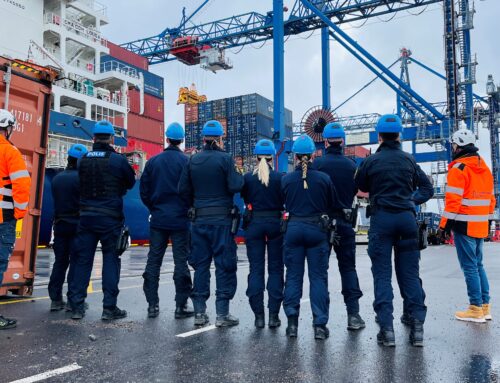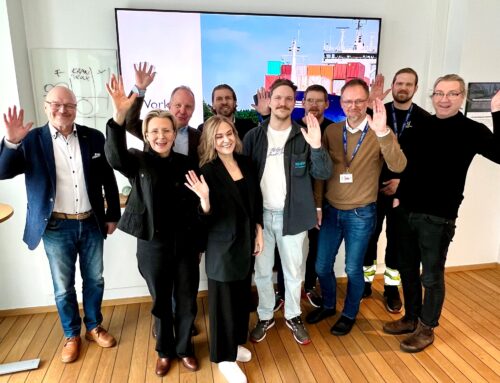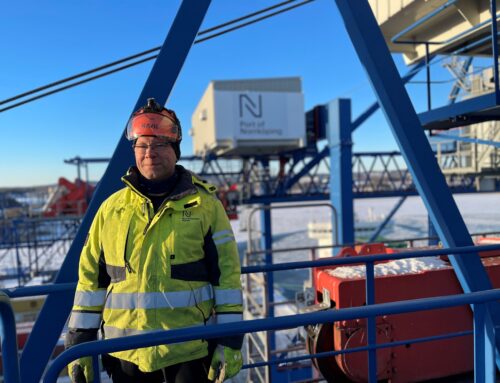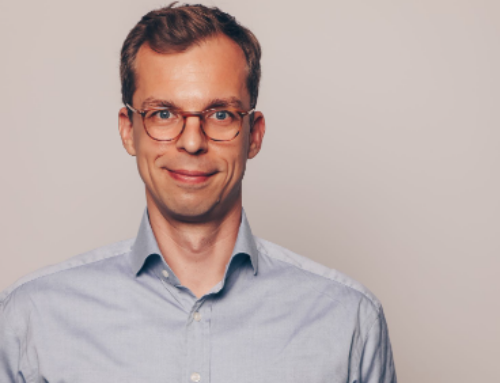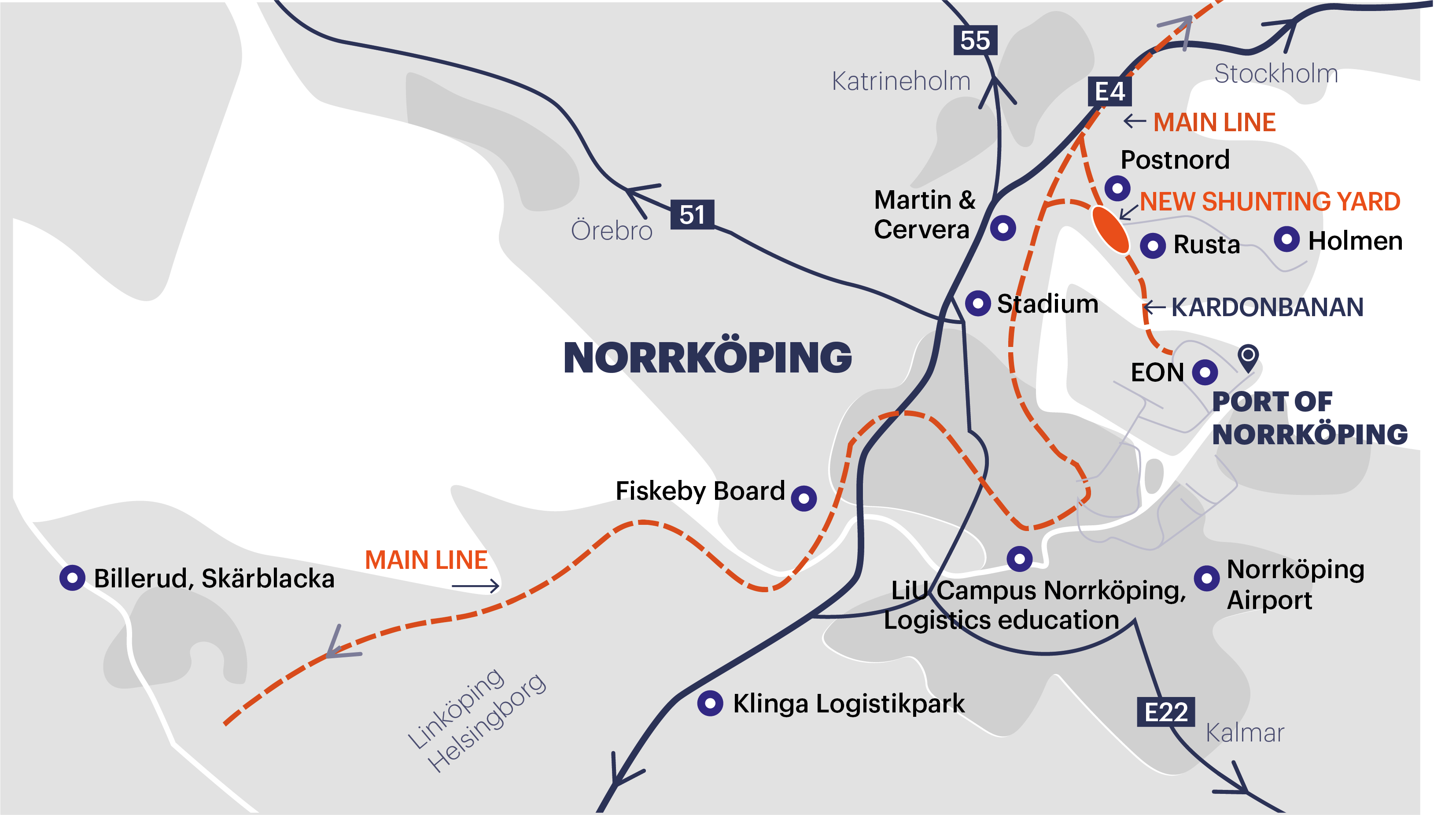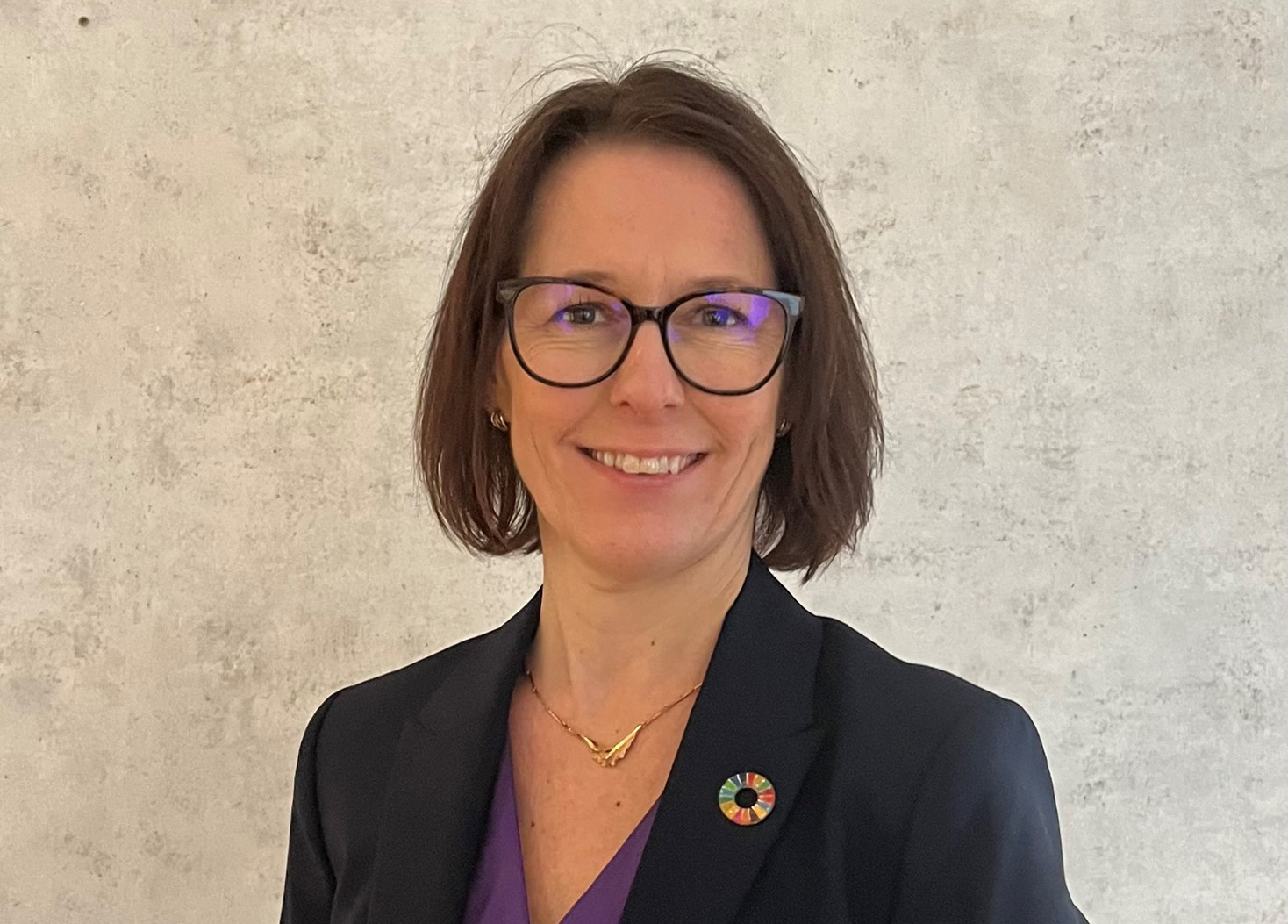
2024-03-14
I might be stating the obvious when I say that we need to move away from fossil fuels as soon as possible, right? Unfortunately, it’s a fact that 2023 was the hottest year ever recorded on Earth, with a global temperature close to the 1.5°C limit (Copernicus: 2023 is the hottest year on record). Heat records are linked to the enormous emissions of greenhouse gases from the use of fossil fuels, and the concentration of greenhouse gases in the atmosphere is hitting unpleasant records.
It can easily feel hopeless, but as Head of Sustainability for the Swedish operations of one of the world’s largest energy technology companies, I see the forces at work, not only in Sweden but globally. I want to believe that together we can turn the tide, and that’s what this column will be about.
As this is Norrköping Port’s newsletter, why not start with shipping?
Emissions of greenhouse gases from shipping currently account for about 2.6% of the total global emissions, and without reduction measures, this share could more than triple by 2050 (itf-oecd.org). Although the focus naturally lies on the vessels themselves, actions in the ports can significantly contribute to the environmental performance of shipping and the phase-out of fossil fuels in the maritime industry.
Perhaps you’ve heard of FlagshipONE, the facility in Örnsköldsvik that will produce green fuel for shipping in the form of e-methanol? Using fossil-free electricity from sources such as wind or hydroelectric power, water is first split into oxygen and hydrogen in an electrolyzer. Then, hydrogen is combined with biogenic carbon dioxide to produce e-methanol, which is sold as ship fuel. And why do I know so much about the facility in Örnsköldsvik? Well, Siemens Energy is one of the partners in the project, providing not only electrolyzers but also compressors, electrification, automation, and digital solutions. FlagshipTWO, -THREE, -FOUR, and more are already in the planning phase, indicating high demand.
E-methanol is also one of the green fuels we are considering for the gas turbines we develop and manufacture in Finspång. Biogas, biodiesel, hydrogen, and e-ammonia are other interesting fuels for turbines.
You might be wondering what role gas turbines play in the future energy system?
Now, with the climate crisis no longer a future threat but a reality, society will need to change in several ways, and many things are already underway. Enormous amounts of wind and solar power are being developed worldwide. In 2023, renewable energy increased by 50% globally compared to the previous year, according to the International Energy Agency (IEA), which predicts that growth will accelerate in the coming years. That’s positive news. But when the wind isn’t blowing, or when the sun isn’t shining, we need other energy sources ready to step in, and that’s where our gas turbines come into play, providing the electricity and heat needed, and it becomes completely fossil-free when the turbine runs on green fuels.
At our Zero Emission Hydrogen Turbine Center in Finspång, we demonstrate what a fossil-free energy system could look like based on renewable energy sources like solar, combined with gas turbines and hydrogen. And the interest has been overwhelming. We’ve welcomed thousands of visitors from Thailand, Brazil, the USA, and all over the world in the past two years, and several hydrogen-ready turbines have already been delivered to customers in Germany.
But back to Norrköping Port. It’s incredibly important for us at Siemens Energy, as we transport almost all the gas turbines manufactured in Finspång to customers worldwide via ships. A gas turbine, on a trailer and with a truck, can weigh up to 400 tons in some cases, and to handle that, both roads and other infrastructure need to be adapted for large and heavy transports.
Without exaggeration, Highway 51 and the port are vital arteries for our operations. Most of my nearly 4000 colleagues in Sweden work in Finspång. However, our employees don’t just live in Finspång; they are scattered throughout the county – we are not only Finspång’s but also Norrköping’s largest private employer! Over the years, the road has been adapted so that the long and heavy transports can have a smooth journey and disturb commuters as little as possible. Perhaps you’ve seen the large transports going from Finspång to the port? They usually leave Siemens Energy shortly after the morning rush hour to minimize traffic disruption.
Well-functioning infrastructure is the hub of a growing region. I believe that in the future, infrastructure for hydrogen and carbon dioxide will also be needed. They will become commodities in the effort to stay within planetary boundaries, and here, ports have a chance to play a decisive role.
I also see that stable power grids will be needed near ports to provide (fossil-free) electricity to ships docked in the port so that they don’t have to run their diesel engines. The demand from ships to be able to refuel with e-methanol and other green fuels is likely to increase as well. This will then be a competitive advantage for ports that can offer fossil-free fuels.
In general, it can be said that the future energy systems will look very different depending on where in the world we are, and they will become increasingly integrated and complex.
Here in the region of Östergötland, we have both the expertise and the innovation power to contribute to a sustainable transition. Step by step, we are getting there.
Åsa Lyckström
Head of Sustainability
Siemens Energy
…………….
The guest column is a commenting text and the columnists themselves are responsible for analysis and opinions in the text.

